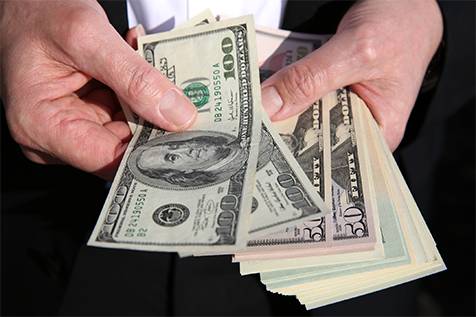The US dollar held steady just below its three-week high against a basket of currencies on Tuesday, ahead of the release of inflation data in the United States, which is expected to guide traders regarding short-term interest rate prospects.
The dollar has received support in recent weeks from the gradual rise in US Treasury yields, as investors monitor the possibility that Federal Reserve Chair Jerome Powell may be forced to leave office early, amid repeated criticism from US President Donald Trump.
Meanwhile, the euro, British pound, and Swiss franc recovered slightly from losses recorded the previous day, ahead of a series of economic data releases later today, including US inflation figures and the German investor sentiment index.
The euro rose by 0.2% to $1.1688, ending a four-day losing streak.
Roberto Cobo, a strategist at BBVA, said: “The release of US Consumer Price Index (CPI) data today will be a pivotal moment for the EUR/USD exchange rate.”
He explained that if the inflation data comes in stronger than expected, it will strengthen the Fed’s case for delaying rate cuts, providing short-term support for the dollar. But if the data disappoints, it will be harder for the Fed to justify a “wait-and-see” stance, which may lead to a dollar decline.
The dollar was little changed against the Japanese yen at 147.71 yen, after earlier touching 147.89 yen — its highest level since June 23.
The dollar index — which measures the performance of the US currency against six major peers including the yen and euro — edged down slightly to 98.003, below its overnight peak of 98.136, the highest since June 25.
Jerome Powell had previously stated that he expects inflation to rise this summer as a result of tariffs, meaning the Federal Reserve may keep interest rates unchanged until later in the year.
According to a Reuters poll, economists expect headline inflation to rise to 2.7% year-over-year, up from 2.4% the previous month, while core inflation is expected to rise to 3.0% from 2.8%.
James Kniveton, senior FX dealer at Convera, wrote in a client note: “If inflation fails to show or remains flat, questions may arise over the Fed’s recent decision not to cut rates, potentially intensifying calls for monetary easing.”
He added: “Calls from the White House to change Fed leadership may increase.”
Trump renewed his criticism of Powell on Monday, reiterating that interest rates should be at 1% or lower, instead of the current range of 4.25% to 4.50%.
In the futures markets, traders expect the Fed to lower interest rates by about 50 basis points by year-end, with the first cut — a quarter point — likely to come in September.
Elsewhere, currencies showed little reaction to China’s GDP data, which showed 5.2% growth in the last quarter, exceeding analysts’ expectations — a sign of some resilience in the face of US tariffs.
However, analysts warned of underlying weakness and rising risks later this year, which may prompt Beijing to expand stimulus programs.
The Chinese yuan dipped slightly to 7.1766 per dollar in offshore trading before recovering slightly to 7.175.
The British pound also rose by 0.2% to $1.1687, ahead of the annual Mansion House speech to be delivered today by Bank of England Governor Andrew Bailey to London’s financial sector, alongside UK Chancellor Rachel Reeves.


